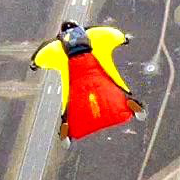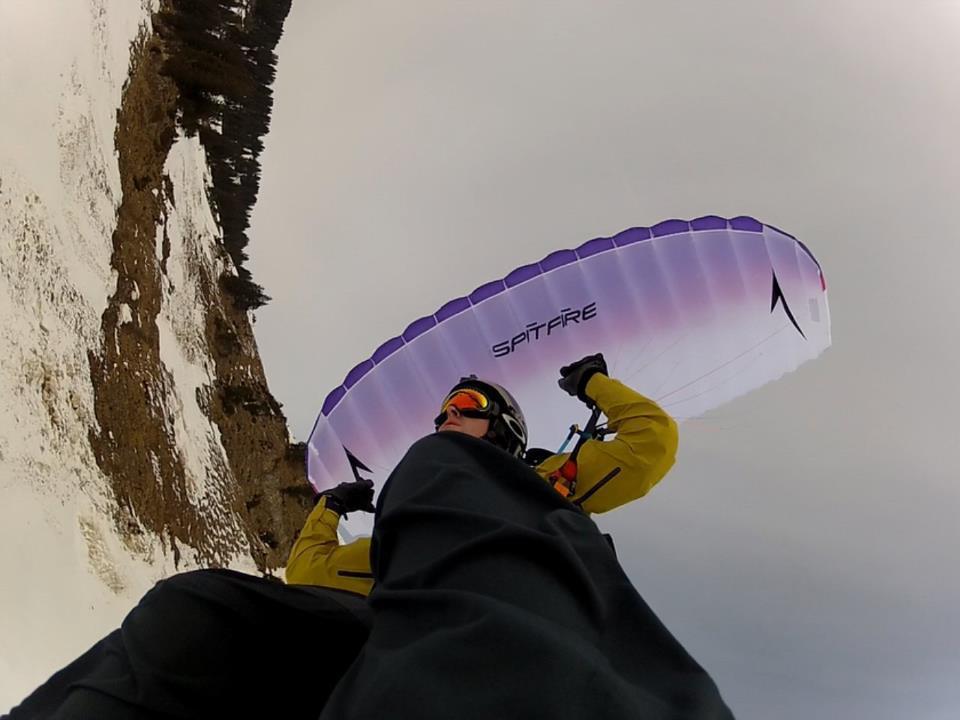
Was: Recommended specs on reserve exit weight, do you go over max?
By
phoenixlpr, in Gear and Rigging
Recommended Posts
QuoteQuoteThere are MANY more people who know much more than you can currently understand!
It was not a question.
No it was not a question, I think he meant it as statement of fact. But then what do I know?
QuoteI do know that overload does not improve flight characteristics.
I think you are starting to see the light.
My idea of a fair fight is clubbing baby seals
Let's look at it this way:
It is not necessarily true that the additional force to slow a heavier jumper is directly proportional to the mass difference. Force is a function of acceleration (negative in this case) - so stopping an object with only a small amount of kinetic energy but within a short distance can require the same force as a much larger object brought to a stop more slowly.
If a heavier jumper's deployment consumed more altitude, then the forces would be lessened. Similarly, a lighter jumper having a premature whilst head-down is going to subject their canopy to much greater stresses than someone just overloading it and going through a belly-to-earth delployment, especially since the excess energy is only proportional to additional mass but to the square of the velocity.
Body shapes may dictate that 2 jumpers of different exit weights fall at the same speed at terminal due to drag differences. If this is the case, and the loss of height during deployement was identical, only then would the braking forces have a ratio identical to that of the exit weights.
In reality, I'm not sure whether anyone can say for certain how the canopy will open under a given loading: this is a function of how the canopy pressurises, stages and presents drag to the relative wind, and may not correlate linearly with the speed of the relative wind. This in turn determines how quickly the body is slowed and the forces involved.
It is not necessarily true that the additional force to slow a heavier jumper is directly proportional to the mass difference. Force is a function of acceleration (negative in this case) - so stopping an object with only a small amount of kinetic energy but within a short distance can require the same force as a much larger object brought to a stop more slowly.
If a heavier jumper's deployment consumed more altitude, then the forces would be lessened. Similarly, a lighter jumper having a premature whilst head-down is going to subject their canopy to much greater stresses than someone just overloading it and going through a belly-to-earth delployment, especially since the excess energy is only proportional to additional mass but to the square of the velocity.
Body shapes may dictate that 2 jumpers of different exit weights fall at the same speed at terminal due to drag differences. If this is the case, and the loss of height during deployement was identical, only then would the braking forces have a ratio identical to that of the exit weights.
In reality, I'm not sure whether anyone can say for certain how the canopy will open under a given loading: this is a function of how the canopy pressurises, stages and presents drag to the relative wind, and may not correlate linearly with the speed of the relative wind. This in turn determines how quickly the body is slowed and the forces involved.
--
BASE #1182
Muff #3573
PFI #52; UK WSI #13
BASE #1182
Muff #3573
PFI #52; UK WSI #13
QuoteIn reality, I'm not sure whether anyone can say for certain how the canopy will open under a given loading:
There are things called Somats and load links that will give you very exact data on openings.
My idea of a fair fight is clubbing baby seals
QuoteQuoteIn reality, I'm not sure whether anyone can say for certain how the canopy will open under a given loading:
There are things called Somats and load links that will give you very exact data on openings.
Brinnell blocks work well for measuring peak opening force, one on each riser. That's how we did it for TSO testing.
Mick.
QuoteBrinnell blocks work well for measuring peak opening force, one on each riser. That's how we did it for TSO testing.
The Somats can give you at least 8 data points. You can get peak forces on each riser, deployment speed and duration and the latest interest rate from BofA.
My idea of a fair fight is clubbing baby seals
have you had a terminal reserve ride yet?? and what is this stuff about smaller reserves opening slower? i think i still got bruises from my last one under a pd 113 6 months ago. go jump and take 30 second delay then pull silver handle. see what opening force is like. then when you get down.... if you get down push your thumb thru your reserve fabric. it aint that strong. shit happens cheif. even if your math says it cant.
bsbd
keith
p.s. nobody really wants you to bounce but this is kinda a silly argument.
bsbd
keith
p.s. nobody really wants you to bounce but this is kinda a silly argument.
The skies are no longer safe
I'm back
I'm back
Quotehave you had a terminal reserve ride yet?
Kettle meet pot. You are 65 pounds over the maximum recommended weight for an expert canopy pilot on your PD-113.
My idea of a fair fight is clubbing baby seals
Quotehave you had a terminal reserve ride yet??
Yes. I had.




It was not a question.
Share this post
Link to post
Share on other sites